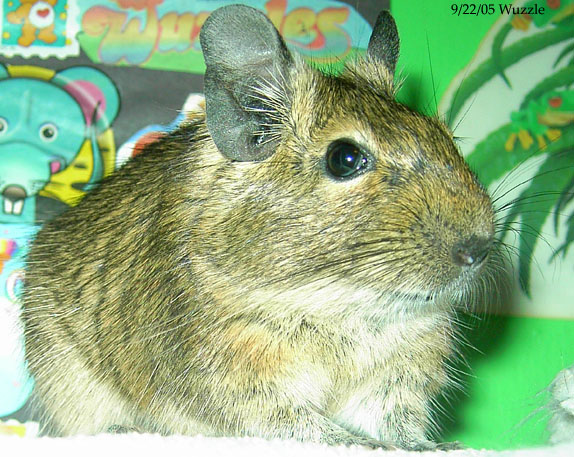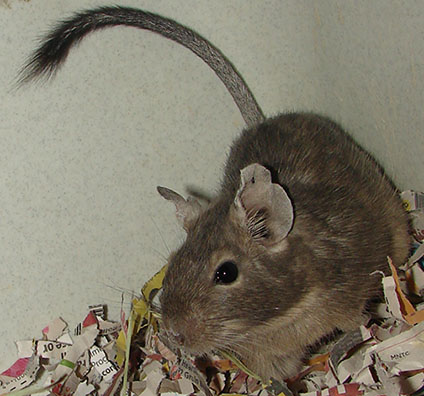
Degu/Degus
Please click on a link to take you to each page.
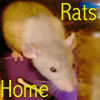
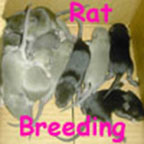
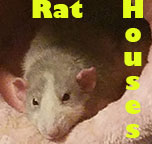
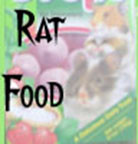

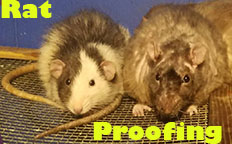
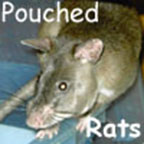

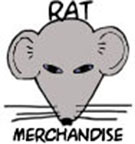
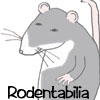


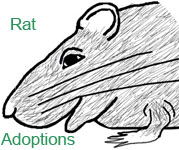
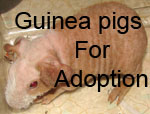


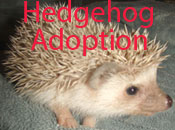
Please click on a picture to take you to each page
80stoysale.com HOME
Degus are small rodents. They originate from a small part of Chile.
Commonly they are often referred to as "Chilean squirrel's".
Their appearance is much like a large Gerbil or small Chinchilla.
They have a small tuft of hair at the end of their tails.
They are also known as Octodon Degu, "Octodon" meaning "eight-toothed rodent" which means that molar teeth surfaces look like a figure eight.
Degu is one Degu, Degus is 2 or more.
Degus are considered an "Exotic" pet and are somewhat rare and are not sold in most common Pet shops.
The Pet shops who do sell Degus need to be USDA licensed in order to sell them.
If a local pet shop does not carry them, you may need to special order them or locate a local breedery.
Degus like to hold their tails up high in the air and also use them for balance when walking.
Degus used to only come in one color -the wild Agouti brown color.
Now due to breeders experimenting with genetics, degus come in various colors from agouti/brown, white, pied, blue, black and yellow/sand.
Degus take Dust baths -like Chinchilla's in Volcano dust or sand.
Providing your Degu with dust is important, this is how they bathe.
The dust or sand helps absorb oils that can build up on their hair/skin.
Degus hair is very thick and they should not be bathed in water. Their hair would stay wet for a long period of time and that could cause them to become ill.
Dust can be given in plastic dust houses, dishes, jars or containers. Make sure they are safe and the Degu will not get stuck in them.
Degus need a large running wheel. They love to run and spend many, many hours a day running on their wheels.
They also enjoy running in large Ferret size balls.
Wild Degus lifespans are quite short, about a year. However, pet Degus tend to live much longer, Typically. 2-5 years old. Some can live up to 8 years.
Females are pregnant for 87-93 days, much longer than a lot of small animals.
There is an average of 3-9 babies per litter. However, on occasion they have been known to have as many as 12.
Degu babies should be weaned and seperated into same sex groups around 6-7 weeks.
Male private areas are spaced further apart, while Females are closer together.
It can be difficult for an inexperienced person to tell Females & males apart.
Degus live best in same sex pairs or groups. It is best if they are kept together since birth (Siblings),
Degus under 4 months old are much easier to introduce to each other, then degus of older age.
Degus who have had friends before are usually more accepting of having friends.
Degus who have been alone for a period of time can be difficult to introduce to others.
Some Degus if left by themselves have been known to get depressed and die from loneliness.
Degus are very frequent boxers, this is where they stand on their hind legs and push their hands at each other. They do this out of boredom, aggression and playfulness.
Degus can make noise. They can chirp, churble and bark. They make noises commonly when fighting, mating, announcing babies being born, when loud noises happen or if something startles them.
It can appear as if they have the hiccups.
Degus play all the time, day or night and take short little naps throughout the day.
Some Degus are known to be very heavy sleepers and even if touched or bothered will just keep on sleeping.
Degus are very curious and will nibble on anything and everything.
They are also very fast and are not very fond of being held.
They prefer sitting in your hand rather than having your hands wrapped around them. They are also very good shoulder riders.
They enjoy building nests and providing them with towels, paper towels, shredded newspaper, tissues and/or napkins will provide them with enjoyment.
Degus can not digest sugar well and if over time they are fed sugar frequently, a buildup of sugar in their bodies can occur and cause an illness similar to Diabetes, severe illness and death.
Alot of Scientific Laboratories use Degus to research Diabetes drugs.
Providing the degus with a wheel helps them run off any sugar that they may consume.
Degus can be fed rodent lab blocks, Degu food, guinea pig food, rabbit food, Chinchilla food or a basic seed mix rodent diet.
Avoid rabbit, Chinchilla and Guinea pig foods with colored pieces or a large amount of sugary pieces or ingredients that may contain molasses (Sugar) Some Degus will not eat Degu food or Rabbit food so you may have to try several different types to find which one they like.
As an addition to their food, degus need hay in their diet. Some feed several times a week to daily.
Timothy hay is the most nutritious for them. Meadow hay, orchard grass and dandelions can be fed also.
Remember Degus will nibble and eat just about anything so just because they will eat it, does not mean it is good for them.
Many Degus enjoy chewing on dog bones, sticks and wood items. They enjoy Apple sticks
Degus enjoy seeds. Sunflower seeds, safflower seeds, unsalted nuts, peas, corn, carrots and cooked potato's on occasion as snacks.
Degus can also be fed fresh fruit such as bananas or apples on rare occasions -such as once a month. Make sure all serving amounts you give them of human foods are very small.
Degus should have water available all the time. They can use a water bottle. Dishes will get spilled and could get them wet and are not recommended.
Degus are chewers. hard plastic (Bird bottles) or glass bottles are recommended. Ceramic or glass dishes are best. Plastic dishes can get chewed.
Placing the water bottle on the outside of the cage with just the mouthpiece inside the cage can help prevent chewing on the bottle.
Degus enjoy climbing. Wooden ledges, sticks and ramps are good for climbing on.
Wire cages are more suitable than aquariums due to better ventilation and gives them the ability to climb.
Degus should have a cage bar spacing of around 1/4 inch. Wider cage bar spacing may allow your degu to escape.
Cages should be made of wire, have metal pan bottoms -not plastic. Plastic bottom cages can be chewed.
Wood cages can absorb urine and can become soiled and smelly quickly.
There are several different bedding options that can be used.
I have owned Degus since 2005. For many years I kept them as pets only and only bred them at my jobs. Eventually in 2012 I started breeding them. I am a USDA licensed small animal breeder located in Chaska, MN.
I currently have 3 breeding cages of degus. I try to have degus available every few months.
Please email me to check availability of degus.
Here are a few pictures of some of my pet degus over the years and some of the previous ones for adoption.







